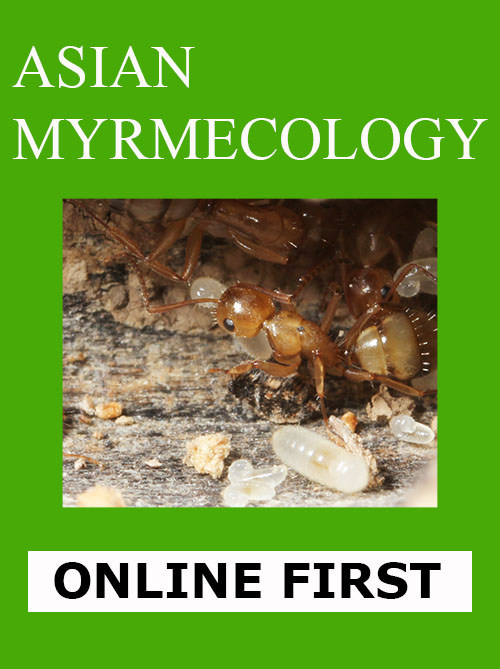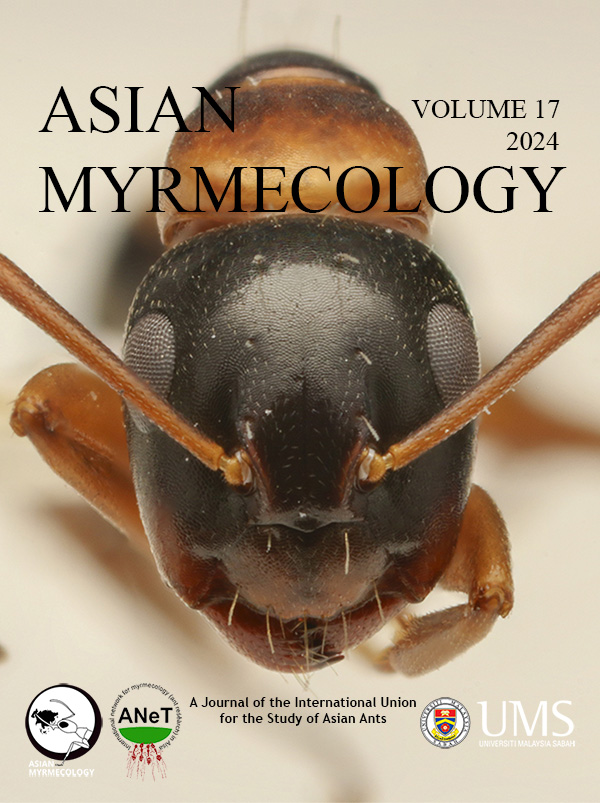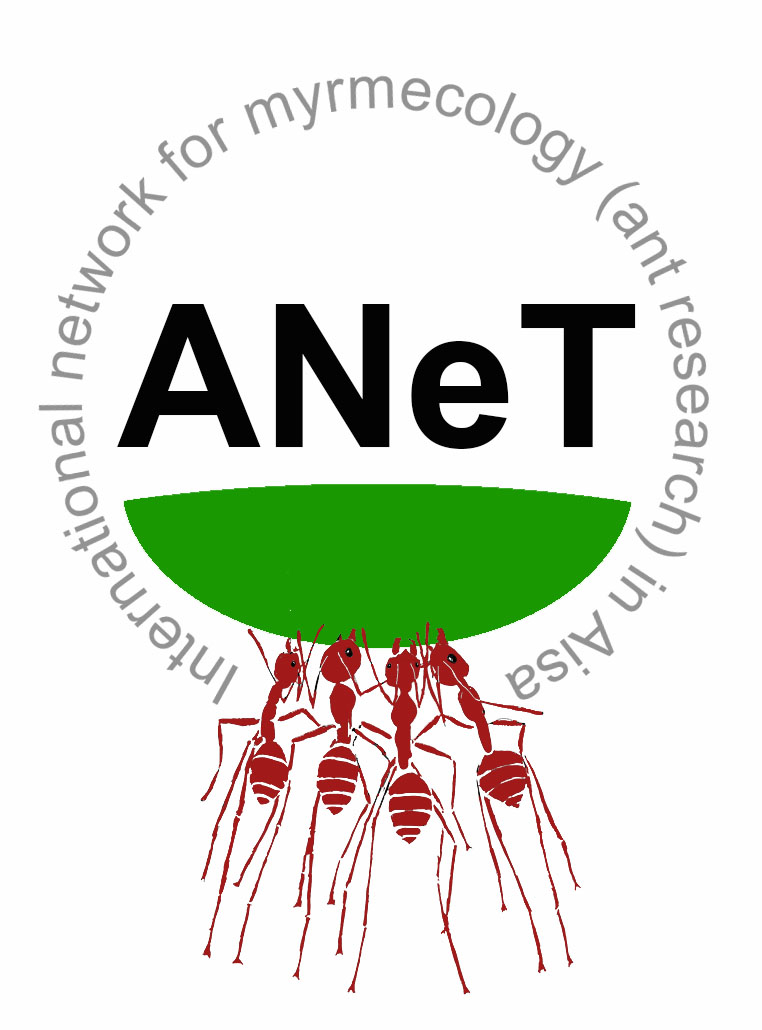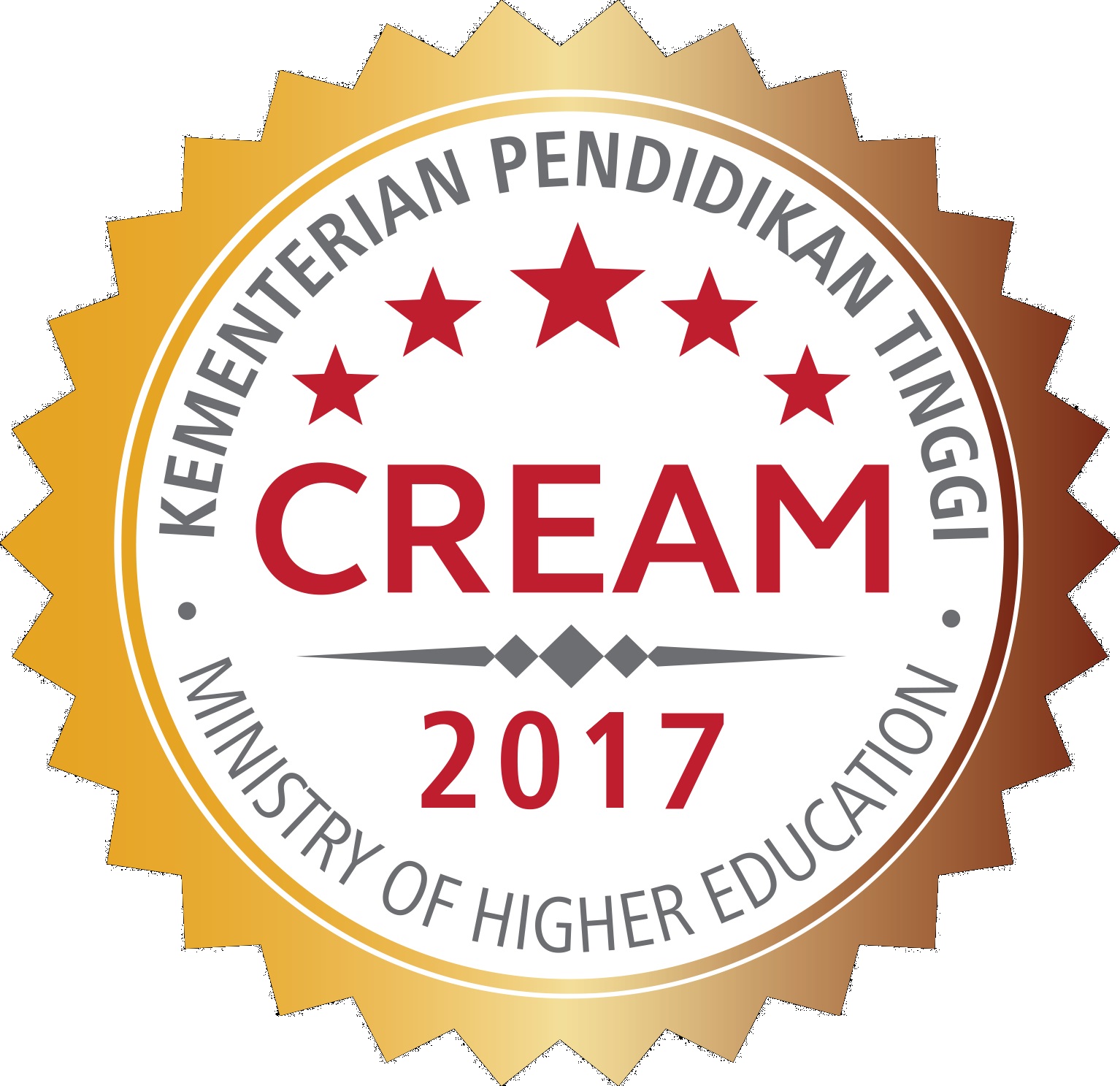ASIAN
MYRMECOLOGY
Image: François Brassard
online first (online version of paper published before print issue)
DOI: 10.20362/am.018007
Asian Myrmecology 18: 018007 (1-12)
article first published online: 1/July/2025
Reproduction by ergatoid queens in the Oriental myrmicine ant Acanthomyrmex concavus, from Sabah, Borneo, with notes on their ecology and behavior
HAYATO SHINOHARA1*, SZE HUEI YEK2, HIROKI MATSUMURA1, HIROKI KAWAOKA3, ADAM KHALIFE1, HAJIME SASAKI1 & FUMINORI ITO1
Abstract:
Most Acanthomyrmex ants have a granivorous diet, supplemented with other invertebrates and sugars. They are characterized by dimorphic workers, with major workers having substantially larger head width than minor workers. In this study, we investigated the colony composition and behavioral characteristics of both the queen and worker castes in Acanthomyrmex concavus Moffett, 1986, collected in Sabah, Borneo Island, Malaysia. All colonies had one or two ergatoid queens that exhibited an intermediate morphology between major and minor workers. Colony size was small, ranging from nine to thirty-seven minor and one to three major workers. Consistent with other species of Acanthomyrmex, A. concavus fed on tiny seeds (Ficus and Oxalis), and major workers played a crucial role in seed cracking. We discuss the possible selective pressures linking granivory to ergatoid queen evolution in this genus, where more than half of the species have ergatoid queens.
Keywords:
Formicidae, ergatoid queen, dependent colony founding, seed eating
Get PDF (3.2 MB) :
HAYATO SHINOHARA1*, SZE HUEI YEK2, HIROKI MATSUMURA1, HIROKI KAWAOKA3, ADAM KHALIFE1, HAJIME SASAKI1 & FUMINORI ITO1
Abstract:
Most Acanthomyrmex ants have a granivorous diet, supplemented with other invertebrates and sugars. They are characterized by dimorphic workers, with major workers having substantially larger head width than minor workers. In this study, we investigated the colony composition and behavioral characteristics of both the queen and worker castes in Acanthomyrmex concavus Moffett, 1986, collected in Sabah, Borneo Island, Malaysia. All colonies had one or two ergatoid queens that exhibited an intermediate morphology between major and minor workers. Colony size was small, ranging from nine to thirty-seven minor and one to three major workers. Consistent with other species of Acanthomyrmex, A. concavus fed on tiny seeds (Ficus and Oxalis), and major workers played a crucial role in seed cracking. We discuss the possible selective pressures linking granivory to ergatoid queen evolution in this genus, where more than half of the species have ergatoid queens.
Keywords:
Formicidae, ergatoid queen, dependent colony founding, seed eating
Get PDF (3.2 MB) :
Get Electronic Supplementary Material (22KB):
1Faculty of Agriculture, Kagawa University, Ikenobe, Miki, Kagawa 761-0795, Japan
2Institute for Tropical Biology & Conservation, University Malaysia Sabah, Kota Kinabalu, Sabah, Malaysia
3Kita-ku, Okayama-shi, Okayama-prefecture, Japan
*Corresponding author: giru0609@gmail.com



